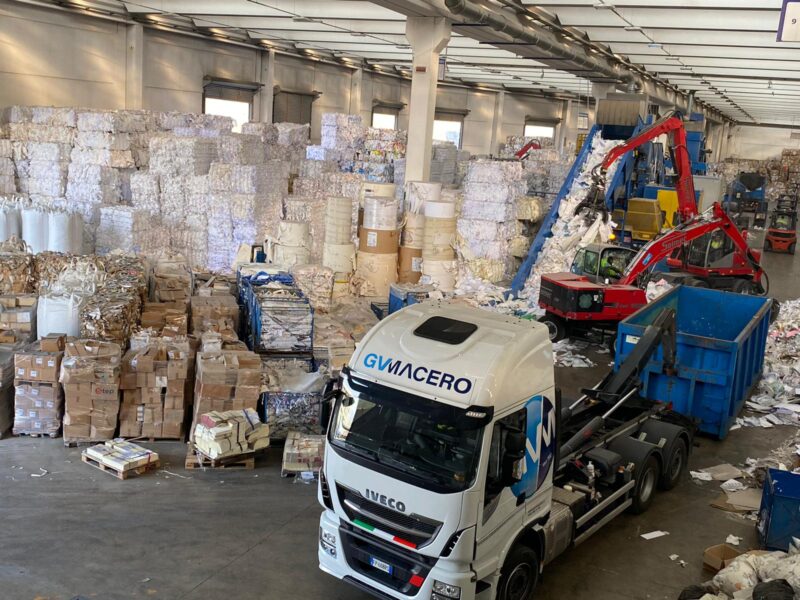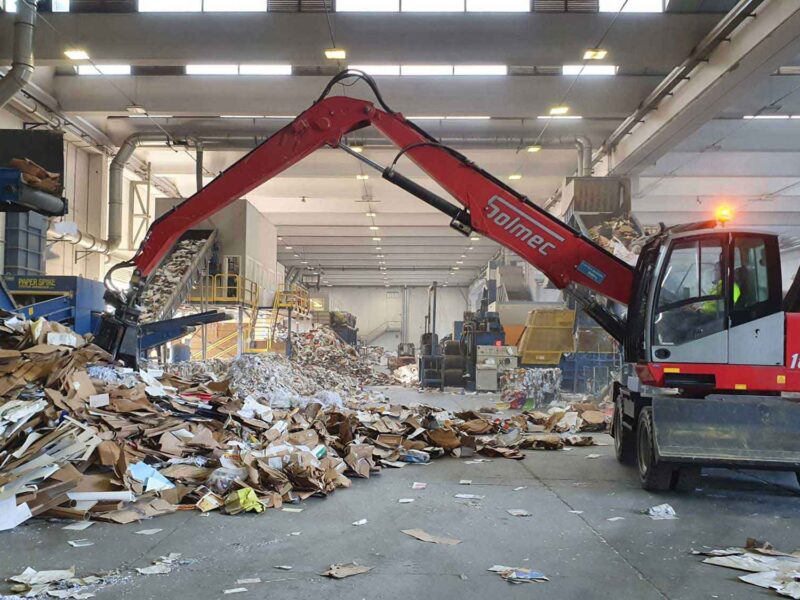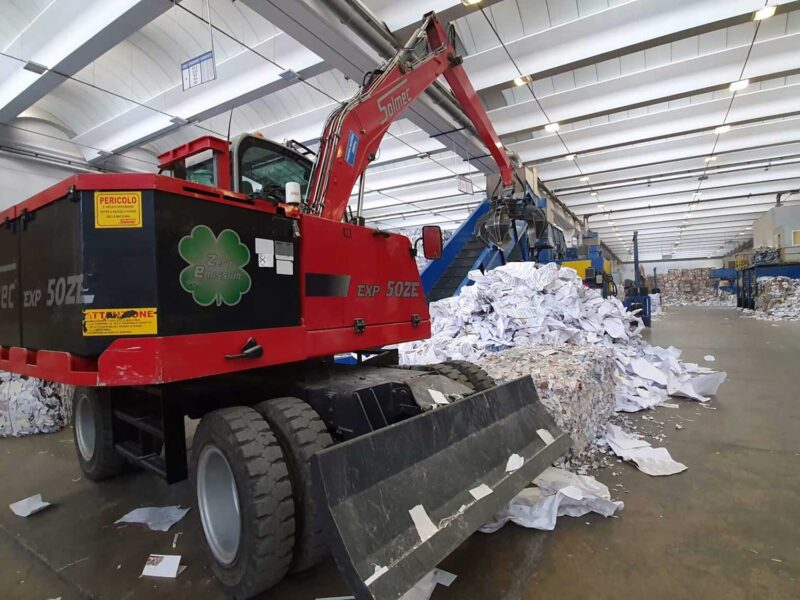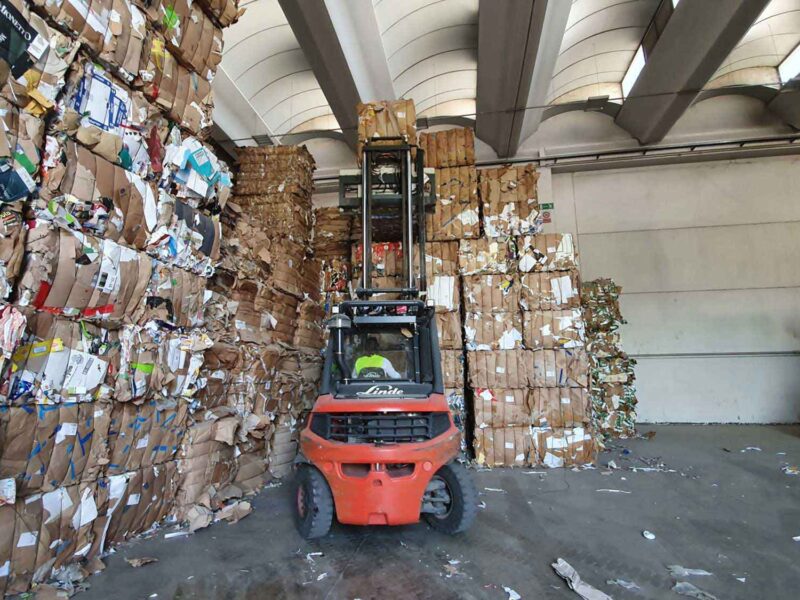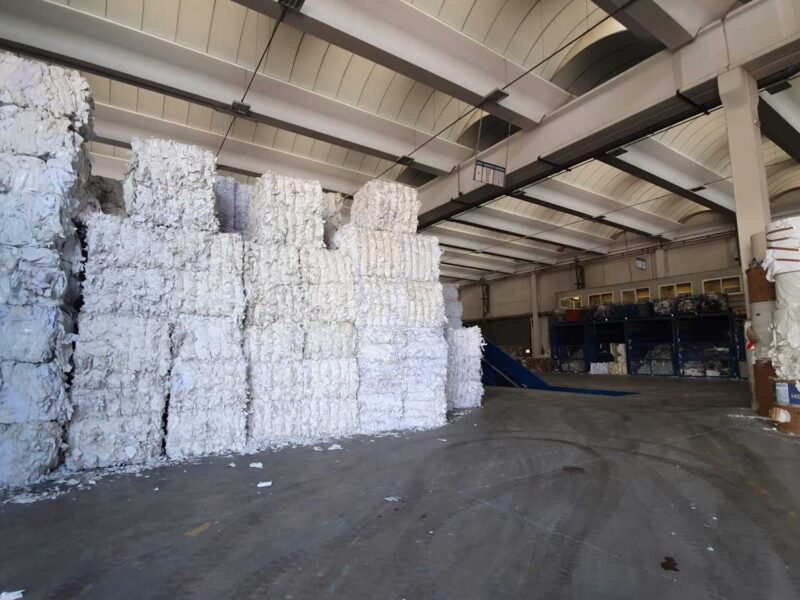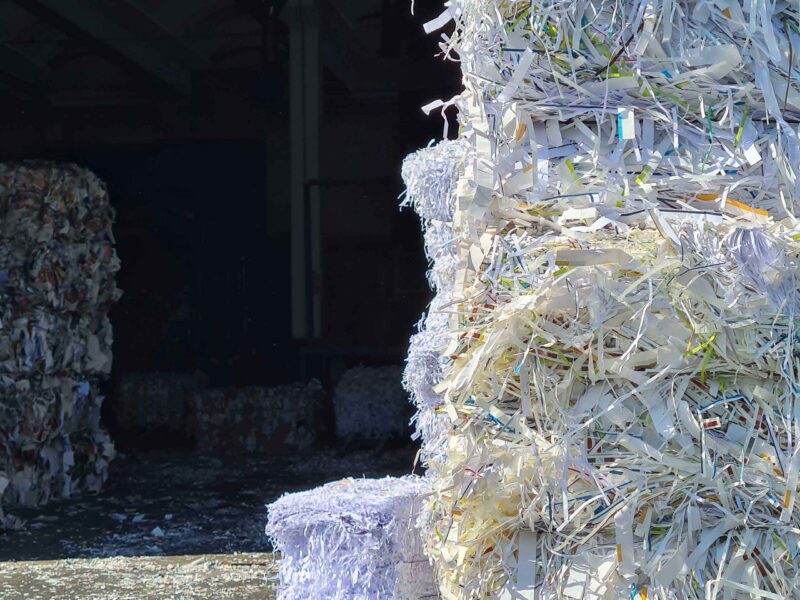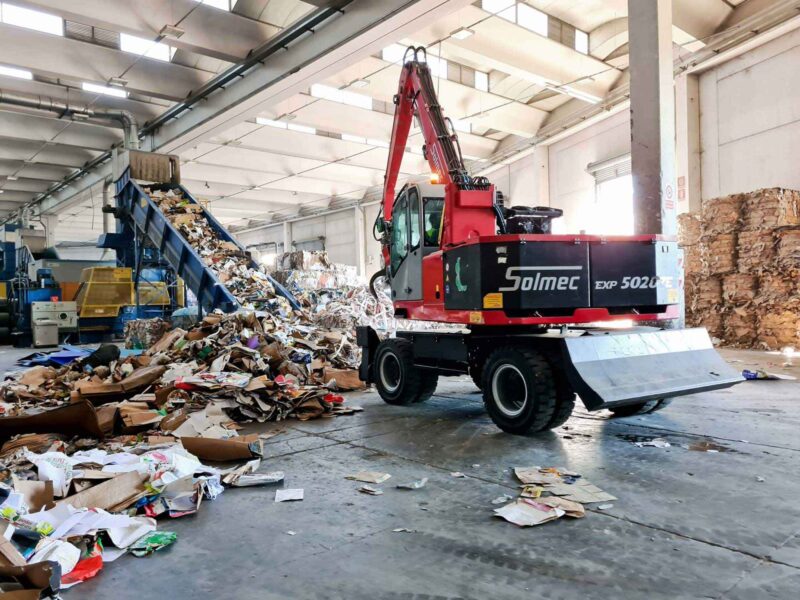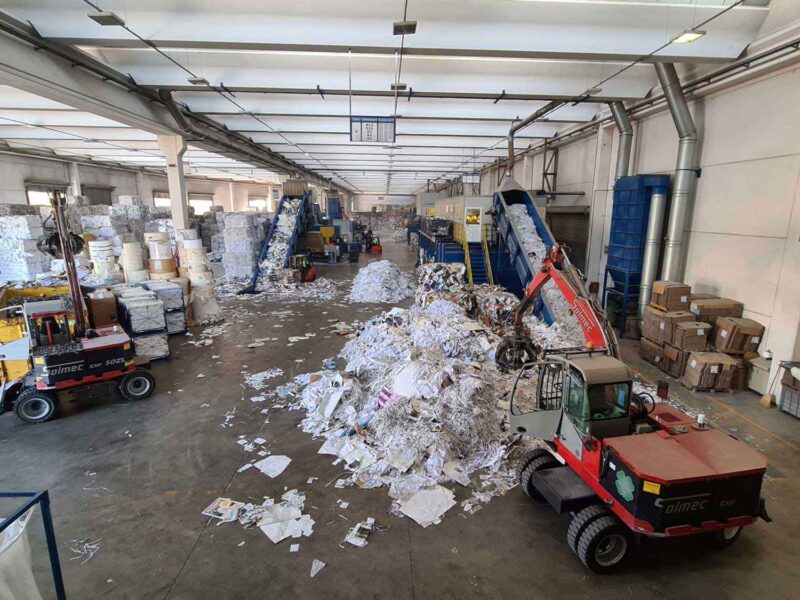Paper Recycling
As with other materials, the disposal process becomes challenging also for paper and cardboard. However, paper is a recyclable material and can be reused through its transformation into waste paper. Paper recycling always starts from a separate collection carried out by citizens to prolong cellulose’s life. After collecting and storing it, paper goes through the paper recycling process, which comprises several steps.
How does paper recycling take place? It all starts with the sorting process. During sorting, the usable fibers of the waste paper are separated from the impurities, such as residues of plastic, metal, wood, and more. Usually, the process is mechanical, although the operators can manually split it into types for more accurate sorting – by running the paper on a conveyor belt. After that, the paper is pressed and bound into bales to be sent to paper mills. Now, the waste paper is thrown into the so-called pulpers: large vats of hot water where, thanks to the swirling motion generated by rotating paddles, the paper is pulped to separate its fibers.
The resulting mixture undergoes further processing to remove any remaining contaminants. The following process is de-inking, eliminating any inks or prints still present, especially if the goal is to obtain white paper. The paper recycling steps continue according to as many refining processes as necessary to separate the pulp from dross and impurities.
At this point of the paper recycling process, the pulp is back to being a raw material ready to be reused. The passage inside the paper machine allows the pulp to be spread and dried, pressed through rollers, and shaped into various formats with different thicknesses, which will be reintroduced into the market.
Do you need to learn more about the disposal of office paper? Or would you like to inquire about the cost of paper disposal? Contact us without any obligation; we will gladly assist you with further details.
Paper recycling in Italy: how are we doing?
In Italy, paper recycling is the first source of paper fiber. It covers 60 percent of the demand for this material by the publishing industry and the industrial sector. The culture of paper recycling is well rooted in our country’s history, starting in the Middle Ages.
Italy is second only to Germany in paper recycling, with an annual rate of 90 percent compared to the European average of 68.9 percent. Of the 9 million tons of paper and cardboard produced yearly in Italy, more than half is obtained using pulp from separate waste collection. About 85% of the paper consumed on national soil is used to create packaging from paper waste.
The sector knows no crisis. Unlike many other industries, the paper and cardboard recycling supply chain is not affected by the lack of raw material.
Paper manufacturing and recycling: the environmental impact
The most significant benefits of paper recycling are the environmental ones: in the last decade, thanks to separating paper and cardboard from other waste, the construction of as many as 222 landfills has been avoided, thus saving the emission of 10.2 million tons of greenhouse gases. Recycling one ton of paper and cardboard saves 2 tons of CO2. Hence the importance of paper recycling, which can halve greenhouse gas emissions into the atmosphere compared to paper production from wood fibers.
About 440 thousand liters of water and 7,600 kW of electricity are consumed to produce one ton of paper from virgin pulp. With paper recycling, processing energy is reduced by two-thirds, and the amount of water involved in the paper recycling steps is only 1,800 liters. Over the years, the disposal of waste paper and its recycling have allowed GV Macero to grow and specialize in this sector, providing a complete and dedicated service to companies, public bodies, and large organized distribution centers that need to dispose of large quantities of paper and cardboard. The waste paper collection is organized systematically and according to the customer’s needs, with modern equipment that keeps up with new regulations.
Paper disposal in Brescia, Bergamo, and neighboring provinces
GV Macero carries out the collection, transportation, and disposal of paper and its recycling mainly in the province of Bergamo, but it can expand these services also to the adjacent provinces and, as needed, across the country, thanks to a network of trusted partners.

